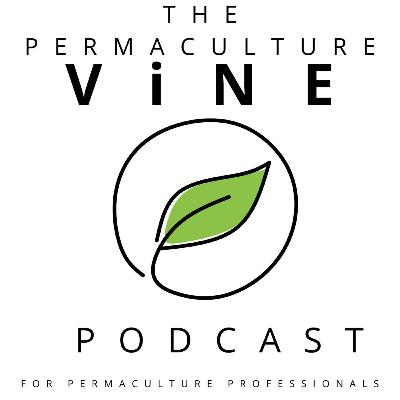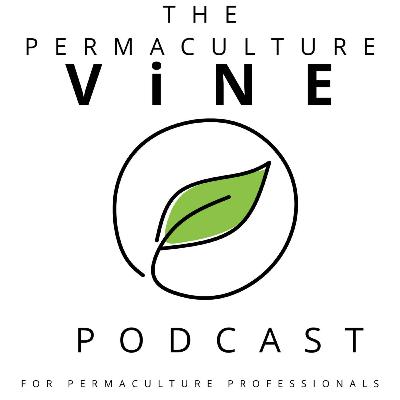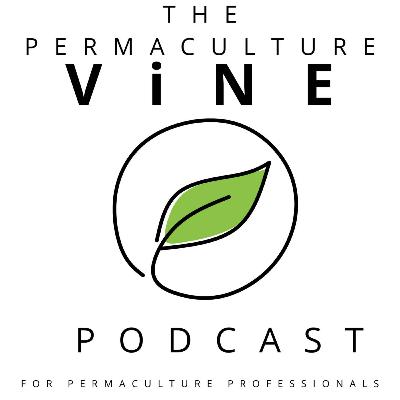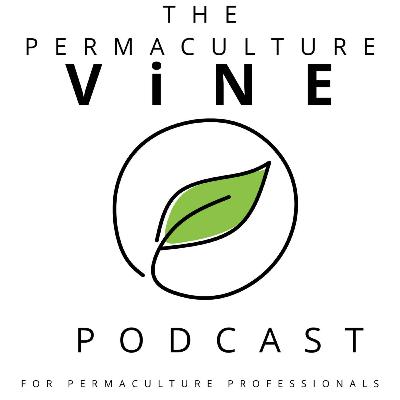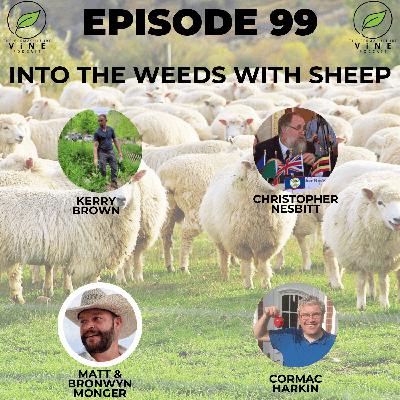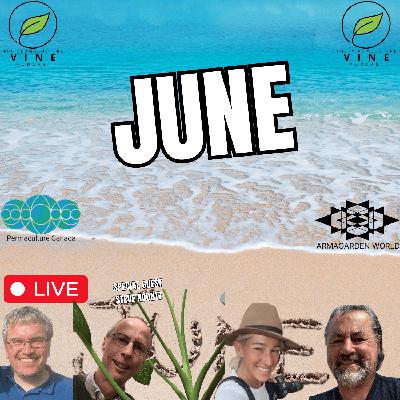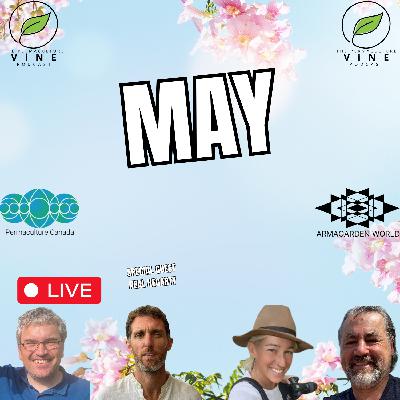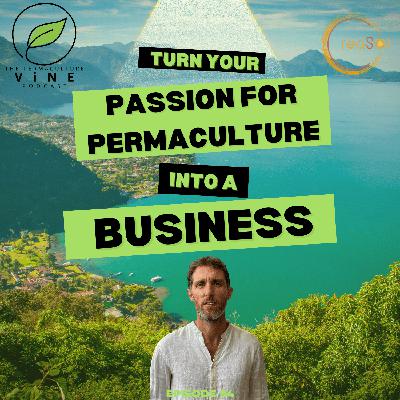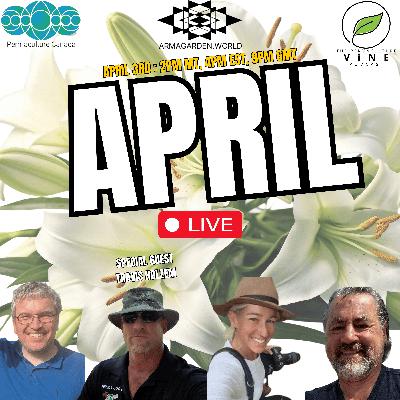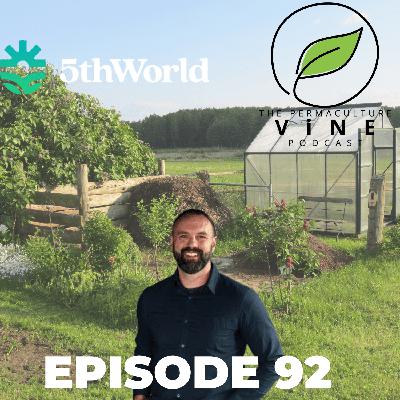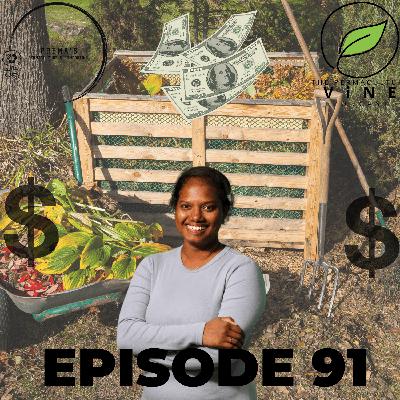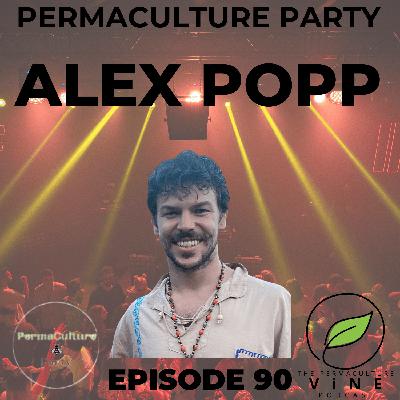110. Harvest Reflections & Winter Designs
Description
Join The Permaculture Vine free Skool community for connection and learning: https://www.skool.com/vine-permaculture-7207/about
In Episode 110 of the Permaculture Vine podcast Cormac, Lindsay and Graham chat about their harvest yields and upcoming design work while addressing a growing concern about artificial intelligence in their field.
Physical Labour and Tree Restoration
Graham’s autumn has cantered on an intensive tree replanting project at a solar farm adjacent to his Michigan property. The job involves correcting improper installation work—1,122 trees were planted with metal cages and burlap left intact around root balls, causing widespread tree death. His team has been working 13-14 hour days removing dead trees, digging new holes, and properly installing replacements. By the recording date, 350 trees were planted and tagged, with Graham noting the physical challenge of keeping pace with Azure, Lindsay’s 36-year-old partner who’s been operating the heavy machinery.
The project illustrates a common problem in large-scale installations: contractors unfamiliar with proper tree planting techniques can create more problems than they solve. The burlap and wire cages, meant to be temporary supports, prevented root expansion and essentially strangled the trees.
Harvest Outcomes
Graham reported exceptional yields this year, attributing much of the success to having additional help on the property. His harvest included first-time production from aronia berries, honey berries, and golden raspberries—all bearing fruit in their first year in the ground. His asparagus bed, planted with 1,000 crowns, exceeded expectations by producing thumb-thick spears in its second year rather than the pencil-thin stalks typically expected. The plants even produced an unusual fall flush following late-season rain and fertilization.
Other significant harvests included several hundred pounds of garlic, a couple hundred pounds of potatoes, 40-50 butternut squash, and abundant fruit from seven-year-old cherry trees. Graham’s experiment with Cabernet Sauvignon wine grapes succeeded despite conventional wisdom that Michigan’s climate wouldn’t provide sufficient heat for proper flavour development.
Lindsay’s harvest was constrained by an impending move—her parents are selling their property in spring, so she and Azure excavated her entire food forest and potted the plants. She processed beets into kraut and preserved garlic in vodka for tincture. With her daughter moving out and plans to spend extended time in Central America, she’s not planting for next season.
Cormac in Ireland reported a “mast year”—a term for exceptional nut production—with abundant chestnuts and apples, though his pear harvest came late.
The Winter Design Window
Winter represents prime design season for northern permaculture practitioners. Graham explained that from mid-November through mid-April, outdoor work essentially stops in Michigan as the ground freezes two to three feet deep. This period allows designers to focus on client projects, planning, and indoor work.
Current design prospects include two campus health clinics seeking to produce food for their communities, potential projects in the US Virgin Islands and Bahamas, and continued work on intentional community development. Lindsay is developing business structures that bridge traditional corporate models with private membership associations, researching share structures and sociocracy for community projects.
She’s also exploring new technology for design presentation, particularly VR and 3D modelling using LIDAR mapping. The goal is to show clients not just what a design looks like initially, but how it will develop over time—a challenge Graham identified as one of the hardest aspects of design communication.
The AI Problem
The conversation took a pointed turn when discussing artificial intelligence in permaculture. Cormac raised concerns about AI-generated content appearing in permaculture circles, citing examples of guilds showing apples and strawberries fruiting simultaneously—an impossibility since strawberries fruit in early season and apples late. He also encountered Facebook groups using AI bots to stimulate conversations, essentially training AI systems on human responses without participants’ knowledge.
Graham was direct: “I’m sorry, I don’t want to teach a robot how to do my job anymore. I want to keep what I enjoy for myself and my friends in permaculture.”
Lindsay added that AI imagery in project presentations immediately raises red flags for her—it signals conceptual work that may never materialize rather than grounded, practical plans. She’s positioning her upcoming permaculture design certification course as explicitly “written by a human” to distinguish it from AI-generated content.
The group agreed that AI has limited appropriate uses—Graham finds it helpful for meeting notes and action item lists—but its application to design work removes the human element that’s central to permaculture’s second ethic: people care.
Design Contact Information
Winter design services are available through Permaculture Canada (permaculturecanada.world), Permaculture Adventures Michigan (permacultureadventuresmi.com), and through Cormac’s strategy sessions for clients seeking guidance on whether they need consultations or full designs.
Graham and Lindsay work internationally with no geographical limitations beyond Antarctica, while Cormac focuses on in-person designs within Ireland and client liaison work for international projects.
Buy a design from Permaculture Canada:
https://permaculturecanada.world/shop/?ref=etcvdgzj
Book a Free 30 minute strategy call with Cormac:
https://zcal.co/vinepermaculture/30min
Get full access to Cormac Harkin at cormacharkin.substack.com/subscribe

